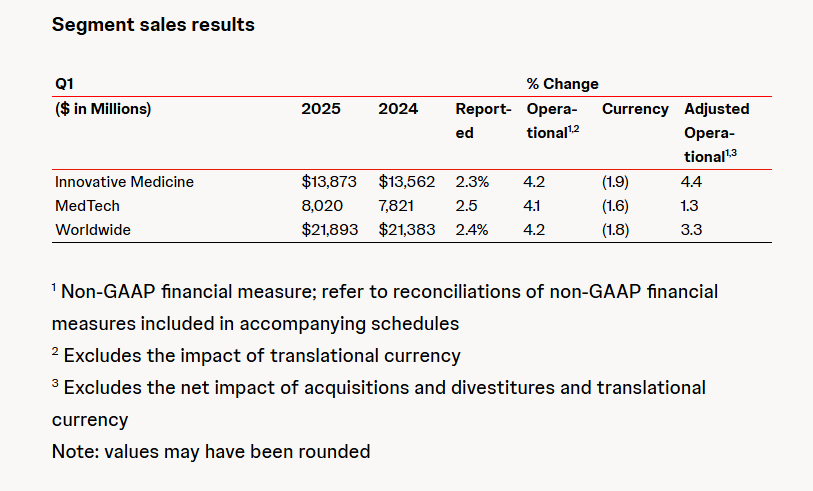Major Breakthrough! ECNU's Innovative Technology Can Reduce SAF Production Costs by 30%
According to a report by the Liberation Daily on March 31, at the Renewable Carbon Resources Science and Technology Engineering Center of East China Normal University, journalists observed several bottles of transparent liquid. These are sustainable aviation fuels (SAF) derived from oils, with their raw material being waste oil commonly known as "gutter oil."
Recently, this fuel sample passed the authoritative testing by the Civil Aviation Second Research Institute of China, with all 48 indicators meeting the standards and complying with the national standard for Jet Fuel Type 3. Furthermore, the scientific research team from East China Normal University achieved innovation in the reaction principle of preparing oil-based Sustainable Aviation Fuel (SAF), which can significantly reduce the cost of converting "waste cooking oil" into aviation fuel.
"This is a disruptive technology that is expected to propel Shanghai into becoming a hub for SAF technological innovation," said Zhao Yixin, project manager of the Green Fuel Initiative at the Shanghai Municipal Science and Technology Commission.
Through the coordination of the project manager team, Shanghai Airport Group will jointly establish a company with the team led by Zhao Chen, the director of the Renewable Carbon Resources Center at East China Normal University, to advance the pilot project of this disruptive technology and lay the foundation for future industrialization.
In China's journey towards carbon peak and carbon neutrality, green fuels play a crucial role.
They are high-energy-density fuels transformed from renewable energy sources, capable of meeting the demands of long-distance maritime and air transport. To foster the green fuel industry, the Municipal Science and Technology Commission established a project manager team last year, along with a strategic expert group composed of experts from Shanghai Jiao Tong University, Tongji University, Shenergy Group, and Huayi Group, continuously monitoring and supporting technological innovation and industrial development in sustainable aviation fuel, green methanol, green ammonia, and other green fuels.
According to statistics, about 99% of carbon emissions in the civil aviation industry come from the consumption of aviation kerosene. Gradually replacing petroleum-based aviation fuel with green fuel has become an international trend. Many countries and international organizations have specified the blending ratio of sustainable aviation fuel (SAF). For example, the EU regulations state that from 2025 onwards, aviation fuel manufacturers must include 2% SAF in the fuel supplied to EU airports; this blending ratio will gradually increase until it reaches 70% by 2050. The Civil Aviation Administration of China has proposed that during the "14th Five-Year Plan" period, the cumulative consumption of sustainable aviation fuel should reach 50,000 tons. Since September last year, Air China, Eastern Airlines, and Southern Airlines have conducted trials on 12 flights by adding SAF.
How to prepare SAF? Song Xuefeng, Vice President and Chief Financial Officer of Shanghai Airport Group, introduced that there are currently four main technological routes, among which HEFA (Hydroprocessed Esters and Fatty Acids) is the first commercialized technology route in China. The raw materials for HEFA are waste oils and fats, which are converted into SAF through steps such as hydrogenation, deoxygenation, and isomerization reactions.
Last July, the establishment of the Large Aircraft New SAF Research and Application Joint Laboratory, a collaboration between COMAC and East China Normal University, attracted attention from the Shanghai Municipal Science and Technology Commission.
Why is COMAC collaborating with the East China Normal University Renewable Carbon Resource Center to conduct research on SAF?
The project manager team from the Municipal Science and Technology Commission visited this research institution for an investigation. They discovered that Professor Zhao Chen’s team produces SAF using waste oils as raw materials, but the reaction principle differs from HEFA. Through process optimization, catalyst improvement, and other innovations, this new technology route significantly reduces energy consumption compared to HEFA, while the yield has notably increased, resulting in a more than 30% reduction in SAF production costs compared to HEFA.
Moreover, compared to SAF produced via HEFA, the new SAF contains more components such as aromatics, enabling it to fully replace petroleum-based aviation fuel rather than being blended with it at a certain ratio. Leveraging these performance advantages, Zhao Chen's team is collaborating with COMAC and AECC Commercial Aircraft Engine Co., Ltd. to better adapt the new SAF to domestically produced aircraft and engines.
Upon discovering the disruptive technology, the project manager's team immediately sprang into action. They reached out to multiple state-owned enterprises to advance pilot projects and facilitate industrialization.
Zhao Yixin introduced that an important mission of the project manager team at the Municipal Science and Technology Commission is to select and support disruptive technology research and development, and to rapidly promote technology iteration and industrialization through integrated industrial layout. "We draw on international advanced experience, focus on strategic needs, and seek disruptive technologies through organized research. Once identified, we use mature technologies to iterate on them. We aim to maintain strategic agility, connecting research teams engaged in disruptive innovation with top-tier enterprises to quickly transform laboratory results into new productive forces."
During the process of对接企业, Chai Mei, a member of the project manager team, found a partner for Zhao Chen - Shanghai Airport Group.
"I used to work at Shenergy Group, where I was exposed to many green fuel technologies. After joining the Airport Group, I started to lay out plans for SAF. Upon receiving柴梅's call, I immediately led a team to visit Professor Zhao Chen's research group," Song Xuefeng told the reporter. "They are one of the most professional research teams we have ever come across. The technology they developed is innovative and disruptive. The SAF products they have prepared have already undergone preliminary certification by domestic professional institutions, and have a solid foundation for industrialization."
Today, Shanghai Airport Group is collaborating with the project manager team from the Shanghai Science and Technology Commission to jointly advance the pilot project for a new type of SAF. The Airport Group has decided to co-found a company with Zhao Chen's team to build a kiloton-scale pilot plant in Shanghai. The Science and Technology Commission has found a supplier of "gutter oil," the raw material for SAF, and will support the advancement of the pilot project.
"In the next 30 years, the SAF industry will continue to grow, with its output value expected to reach trillions of yuan." Looking ahead, Zhao Chen is full of anticipation. The use of disruptive technologies to produce SAF will not only help China achieve its "dual carbon" goals but also reduce the country's reliance on imported crude oil, ensuring national energy security.

Researchers from East China Normal University take samples next to a fixed-bed reactor.
Zhao Chen's team has applied for more than 20 Chinese invention patents for this technology. After the pilot company is established, international patents will be filed.
As the first university in the country to implement full ownership assignment of job-related scientific and technological achievements, East China Normal University has assigned full ownership of more than 20 patents to Zhao Chen's team, supporting them to cooperate with the airport group to establish a pilot company.
In the process of entrepreneurship, associate scientific and technological achievements based on empowerment outcomes are developed. East China Normal University adopts the "dual-empowerment" model, conferring both ownership and long-term right of use of the associated scientific and technological achievements to Zhao Chen's team. In case of special situations during the entrepreneurial process, they can also revert the job-related scientific and technological achievements back to the school through the "achievement conversion" mechanism.
Hu Mei Bing, the Party Secretary of East China Normal University, stated, "We adhere to the belief that 'scientific and technological achievements can only truly realize their innovative value through transformation; not being transformed is the greatest loss.' We have designed a 'zero-risk full empowerment plan,' aiming to use institutional innovation as a lever to drive more disruptive technologies out of laboratories and become a powerful engine for high-quality development."
The reform of the scientific and technological achievement transformation system in universities, the government's reform of science and technology project management, and the strategic layout of technological innovation in state-owned enterprises have collectively accelerated the transformation and industrialization of disruptive innovations from universities. The laboratory achievements of Zhao Chen's team represent the "0-1" starting point on the chain of technological innovation.
The reason for achieving the "0-1" breakthrough is what?
The female scientist said that the foundation of disruptive innovation lies in a deep understanding of scientific principles and long-term accumulation of practical experience. For the past 20 years, she has been researching green fuels, from lignocellulosic biofuels to waste oil fuels, and then to fuels produced from carbon dioxide, conducting in-depth studies. "After understanding the demand for SAF (Sustainable Aviation Fuel) from enterprises, our team considered potential breakthroughs for achieving low-cost, large-scale synthesis of green fuels, and after multiple discussions, we developed an innovative plan."
Close collaboration with industry is also a key reason for their breakthroughs. The research team took charge of a production-education-research integrated sub-project under the National Key Research and Development Program 10 years ago. They entered factories and worked jointly with enterprise teams, accumulating experience in catalyst preparation and chemical production. In Zhao Chen's view, combining scientific theory with practical application can accelerate the industrialization process of innovative achievements.
Compared to traditional aviation fuel, Sustainable Aviation Fuel (SAF) can reduce carbon dioxide emissions by more than 80%, making it a key factor for the global aviation industry to achieve net-zero carbon emissions. In July 2024, the European Union Aviation Safety Agency (EASA) announced the provision of standard evaluation services for SAF producers through the EU SAF Information Exchange Center. In September 2024, the International Air Transport Association (IATA) announced the launch of the Matchmaker platform to connect airlines and SAF suppliers; in December, IATA predicted that global SAF production would reach 2.1 million tons in 2025.
According to the annual report on China's Sustainable Aviation Fuel (SAF) industry by Yahua Consulting, SAF can come from bio-based raw materials such as waste oils, corn/sugarcane fermented ethanol, as well as from green electricity, green hydrogen, and CO2, and can also be derived from urban solid waste. Hydroprocessed esters and fatty acids (HEFA) and alcohol-to-jet (ATJ) are the traditional pathways for producing SAF. Currently, many project plans focus on large-scale gasification of biomass coupled with green hydrogen to produce green methanol, which is then converted into SAF. Additionally, green syngas Fischer-Tropsch synthesis to produce SAF, direct conversion of CO2 and green hydrogen to SAF, and the production of SAF from lignocellulosic materials are also widely regarded as promising technological routes.
Policies are a crucial catalyst for the continuous growth of the sustainable aviation fuel (SAF) market. Countries and regions such as China, the United States, the United Kingdom, Canada, Australia, the European Union, South Korea, Japan, and Singapore have introduced relevant policies or plans to promote the development of the SAF industry. Meanwhile, aircraft manufacturers like Boeing, Airbus, COMAC, and Bombardier, engine manufacturers such as GE and Rolls-Royce, as well as major global airlines, are advancing the demonstration and application of SAF. It is estimated that by 2030, the global SAF market size will exceed 18 million tons, with a value reaching tens of billions of dollars.
【Copyright and Disclaimer】The above information is collected and organized by PlastMatch. The copyright belongs to the original author. This article is reprinted for the purpose of providing more information, and it does not imply that PlastMatch endorses the views expressed in the article or guarantees its accuracy. If there are any errors in the source attribution or if your legitimate rights have been infringed, please contact us, and we will promptly correct or remove the content. If other media, websites, or individuals use the aforementioned content, they must clearly indicate the original source and origin of the work and assume legal responsibility on their own.
Most Popular
-

Overseas Highlights: PPG Establishes New Aerospace Coatings Plant in the US, Yizumi Turkey Company Officially Opens! Pepsi Adjusts Plastic Packaging Goals
-

Abbott and Johnson & Johnson: Global Medical Device Giants' Robust Performance and Strategies Amid Tariff Pressures
-

BYD releases 2024 ESG report: Paid taxes of 51 billion yuan, higher than its net profit for the year.
-

Behind pop mart's surging performance: The Plastics Industry Embraces a Revolution of High-End and Green Transformation
-

The price difference between recycled and virgin PET has led brands to be cautious in their procurement, even settling for the minimum requirements.



